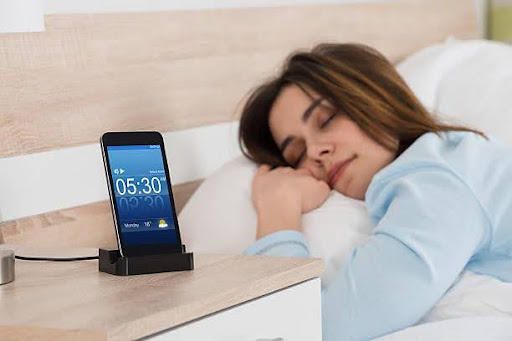Let’s be real—today’s workplace doesn’t always fit neatly into a 9-to-5, Monday-through-Friday mold. Teams are spread out, working from different locations, juggling various shifts, and often logging in from their phones instead of punching a traditional time clock. That’s where mobile time clocks step in and change the game completely. Whether your team is in the field, working remotely, or split between locations, mobile time clocks offer a smarter way to track work hours. They’re not just a tech upgrade—they’re a total mindset shift. Instead of worrying about time theft, late log-ins, or missing timecards, you get real-time data, GPS location tracking, and a better overall handle on your team’s productivity.
Let’s break down why mobile time clocks are essential for modern, flexible teams—and how they can actually make your job a whole lot easier.
What Are Mobile Time Clocks?
First things first—what exactly are we talking about here?
Mobile time clocks are digital tools, usually apps or cloud-based systems, that let employees clock in and out using their smartphones, tablets, or even laptops. They work wherever there’s an internet connection and often include features like GPS tagging, facial recognition, job code tracking, and even integrations with payroll systems.
These aren’t your old-school punch cards. They’re modern, intuitive, and built to keep up with the way we work today.
Why Mobile Time Clocks Make Sense for Flexible Teams
Flexible teams are everywhere now—gig workers, field crews, hybrid office staff, traveling professionals—you name it. Here’s how mobile time clocks make their lives (and yours) a whole lot easier.
1. Clock in Anywhere, Anytime
Gone are the days of lining up at a physical punch clock. With mobile time clocks, your team can log in from a job site, client meeting, their car, or even their kitchen table. This kind of flexibility is gold, especially when you’ve got people working non-traditional hours or in multiple locations.
2. No More “Buddy Punching”
Let’s be honest—people find workarounds. But mobile time clocks make it harder to cheat the system. Many apps use GPS to verify where someone’s clocking in from or even include facial recognition. That means no more punching in for your buddy who’s running late. Accountability just got real.
3. Real-Time Updates for Managers
If you’re managing a team, knowing who’s working, where, and for how long is crucial. Mobile time clocks give you live updates, detailed timesheets, and clean records without chasing people down. Whether you’re checking from your desktop or phone, it’s all just a few taps away.
4. Easy Integration with Payroll
While we won’t talk about the backend finances too much, let’s just say that syncing your team’s hours with your existing payroll system saves you serious time. No more manual data entry, no more mistakes. Mobile time clocks streamline the whole process.
5. Perfect for Remote and Hybrid Work
More companies are adopting hybrid work models, and keeping tabs on time is more challenging than ever. Mobile time clocks create a bridge between in-office and remote teams. Everyone follows the same process, no matter where they are.
How It Helps Employees Too
This isn’t just a manager’s tool—it benefits employees in a big way too.
- Transparency: Everyone can see exactly how many hours they’ve worked.
- Flexibility: They can clock in on-the-go without rushing to a job site just to punch in.
- Accuracy: Forget guessing or writing down hours at the end of the week—this keeps things precise.
When employees trust the system, they’re more likely to stay engaged and productive.
Common Features of Mobile Time Clocks (And Why They Matter)
You might be wondering what makes one app different from another. Here are a few top features to look out for when choosing a mobile time clock system:
- GPS Tracking: Confirms the employee’s physical location when clocking in.
- Offline Mode: Lets workers log time even without internet, syncing later.
- Project/Job Code Tracking: Useful if employees work on multiple projects.
- Photo Capture: Adds another layer of security and accountability.
- Automated Alerts: Reminders to clock in or out, missed punch alerts, etc.
- Customizable Breaks: Tracks lunch or rest periods to stay compliant with labor laws.
- Cloud Storage: Keeps everything backed up and accessible at any time.
These features aren’t just bells and whistles—they’re real tools to simplify operations.
Tips for Making the Switch to Mobile Time Clocks
Switching from paper timesheets or traditional punch clocks to mobile time clocks might seem like a big leap, but it doesn’t have to be overwhelming.
1. Start with a Pilot Group
Test the system with a smaller team to iron out any issues and gather feedback.
2. Train Your Team
Don’t assume everyone’s tech-savvy. A quick demo or walkthrough video can go a long way.
3. Set Clear Expectations
Make sure your team knows when, where, and how to clock in and out. Having clear guidelines from the start prevents confusion later.
4. Monitor and Adjust
Watch how the system performs over a few weeks. Is it saving time? Are there hiccups? Fine-tune as needed.
FAQs About Mobile Time Clocks
Q1: Do mobile time clocks work without the internet?
Yes, many systems have an offline mode that lets employees clock in and out even when there’s no internet connection. The data syncs automatically when the connection is restored.
Q2: Are mobile time clocks secure?
Absolutely. Reputable systems use encryption, GPS verification, and sometimes even biometric data like facial recognition for added security.
Q3: How do mobile time clocks help reduce time theft?
With features like GPS tracking and facial recognition, it becomes much harder for employees to clock in for someone else or fudge their hours.
Q4: Can I use a mobile time clock system for just a few employees?
Yes. These systems are scalable and work well for both small teams and larger organizations. You can start small and expand as needed.
Q5: What devices are supported?
Most mobile time clocks are compatible with both Android and iOS devices. Many also have web-based portals for desktop access.
Conclusion: A Smarter Way to Track Time
If your team is on the move, works flexible hours, or just needs a more efficient way to track time, then mobile time clocks are the solution you’ve been looking for. They take the stress out of managing schedules, eliminate guesswork, and make everyone’s lives easier, from HR to field workers. It’s more than just convenience—it’s about gaining control, boosting productivity, and embracing a smarter way to work. Whether your team is remote, hybrid, or constantly on the go, mobile time clocks make sure time is always on your side.


